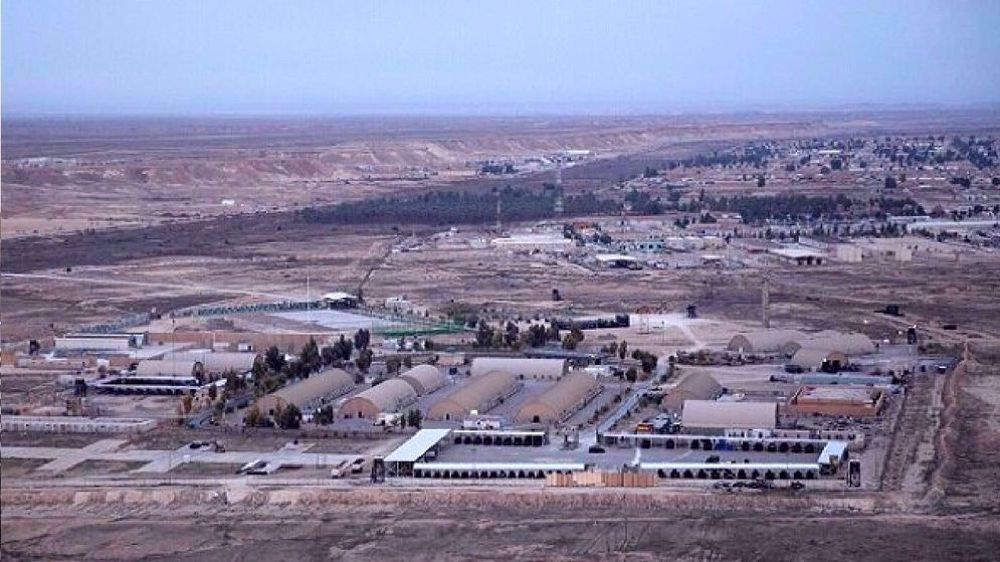US flies B-52 bombers near Chinese islands
The United States has flown two B-52 bombers very close to China's artificial islands in the South China Sea, a move apparently designed to increase tensions with Beijing.
A US official, speaking on condition of anonymity, told The Hill newspaper on Thursday that the bombers made one pass within 12 nautical miles (22.2km, or 13.8 miles) of the islands over the weekend.
The Chinese military radioed the bombers and told them to “get away from our islands.” However, according to the US official, the bombers refused to obey the Chinese order.
Pentagon Press Secretary Peter Cook on Thursday confirmed the incident to The Hill, but declined to say when it happened.
“I know that we conduct B-52 flights in the international airspace in that part of the world all the time,” Cook said.
“And my understanding is there was one B-52 flight — I'm not even sure the date on it — but there was an effort made by Chinese ground controllers to reach out to the aircraft and that aircraft continued its mission unchanged,” he added.
US Defense Department spokesman Navy Cmdr. Bill Urban later said the US bombers did not get within 12 miles of the Chinese islands, and described the mission as part of "routine operations."
‘Freedom of navigation’ operation

The flights came two weeks after the US Navy sent its USS Lassen, a guided-missile destroyer, within 12 nautical miles of the island, in what the Pentagon refers to as a "freedom of navigation" operation.
However, Chinese officials said the concept of “freedom of navigation” should not be used as an excuse for muscle-flexing and Washington should “refrain from saying or doing anything provocative and act responsibly in maintaining regional peace and stability.”
US Defense Secretary Ashton Carter warned that naval operations in the South China Sea would continue. “We will fly, sail and operate wherever international law permits."
“There have been naval operations in that region in recent days and there will be more in the weeks and months to come,” Carter said.
Pentagon spokesman Urban had earlier said that "the United States is conducting routine operations in the South China Sea in accordance with international law."
The US navel maneuvers prompted an angry rebuke from Beijing, which summoned the US ambassador to China in protest and accused Washington of a “serious provocation”.
China has on different occasions asserted its sovereignty over the sea, with Chinese Vice Admiral Yuan Yubai, commander of the People’s Liberation Army Navy’s (PLAN) North Sea Fleet, insisting back in September that the South China Sea belongs to China.
However, the Philippines, Vietnam, Malaysia, Brunei and Taiwan also have overlapping claims over the South China Sea.
China accuses US of stirring up tensions

The US does not recognize China’s sovereignty in the disputed waters and has sent surveillance aircraft and warships to monitor Chinese activities.
Washington accuses Beijing of conducting a massive “land reclamation” program in the disputed waters, whereby it has built up rocks and reefs into artificial islands with facilities for potential military use. However, Beijing accuses Washington of meddling in the regional disputes and deliberately stirring up tensions in the region.
According to an American political pundit, the United States is engaged in a “vainglorious attempt” to project its naval power into the South China Sea, but Beijing will not fall into Washington’s trap.
“While the US acts like an impetuous adolescent, goading China to a fight, China is playing the role of the mature adult in this misadventure, willing to let the transgression go with a simple admonition,” Professor Dennis Etler told Press TV on October 27.
Millions of Afghans face food insecurity
Israel killed 7,488 Palestinian students, educational staff during 2025
VIDEO | Festive celebrations held across China to welcome new year
Zohran Mamdani sworn in as first Muslim mayor of New York City
Putin reaffirms Russia’s resolve to win Western-backed war in Ukraine
Condemnations pour in after Israel bans aid groups from Gaza
How Gen. Soleimani empowered Palestinian resistance, crushed Daesh and reshaped geopolitics
Israel approves construction of 126 illegal settler units in occupied West Bank










 This makes it easy to access the Press TV website
This makes it easy to access the Press TV website